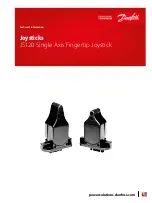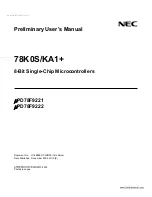
Watlow EZ-ZONE
®
PM PID Controller
•
28
•
Chapter 4 Home Page
Conventions Used in the Menu Pages
To better understand the menu pages that follow
review the naming conventions used. When encoun-
tered throughout this document, the word "default"
implies as shipped from the factory. Each page (Op-
erations, Setup, Profile and Factory) and their associ-
ated menus have identical headers defined below:
Header Name
Definition
Display
Visually displayed infor-
mation from the control.
Parameter Name
Describes the function of
the given parameter.
Range
Defines options available
for this prompt, i.e., min/
max values (numerical),
yes/no, etc... (further ex-
planation below).
Default
Values as delivered from
the factory.
Parameter Appears
in Menu When
Conditions required for
parameter to appear in
menu.
Modbus Relative Ad-
dress
Identifies unique param-
eters using either the
Modbus RTU or Modbus
TCP protocols (further ex-
planation below).
CIP (Common Indus-
trial Protocol)
Identifies unique param-
eters using either the De-
viceNet or EtherNet/IP
protocol (further explana-
tion below).
Data Type R/W
uint = Unsigned 16 bit
integer
dint = long, 32-bit
string = ASCII (8 bits
per character)
float = IEEE 754 32-bit
RWES =
R
eadable
W
ritable
E
EPROM (saved)
User
S
et (saved)
Display
Visual information from the control is displayed to
the observer using a fairly standard 7 segment dis-
play. Due to the use of this technology, several char-
acters displayed need some interpretation, see the
list below:
1
= 1
0
= 0
i
= i
r
= r
2
= 2
a
= A
j
= J
S
= S
3
= 3
b
= b
H
= K
t
= t
4
= 4
c
,
C
= c
l
= L
U
= u
5
= 5
d
= d
m
= M
u
= v
6
= 6
e
= E
n
= n
w
= W
7
= 7
f
= F
o
= o
y
= y
8
= 8
g
= g
p
= P
2
= Z
9
= 9
h
= h
q
= q
Range
Within this column notice that on occasion there will
be numbers found within parenthesis. This number
represents the enumerated value for that particular
selection. Range selections can be made simply by
writing the enumerated value of choice using any of
the available communications protocols. As an ex-
ample, turn to the Setup Page and look at the Analog
Input
[`Ai]
menu and then the Sensor Type
[Sen]
prompt. To turn the sensor off simply write the value
of 62 (off) to Modbus register 400369 and send that
value to the control.
Modbus RTU Protocols
All Modbus registers are 16-bits and as displayed
in this manual are relative addresses (actual). Some
legacy software packages limit available Modbus reg-
isters to 40001 to 49999 (5 digits). Many applications
today require access to all available Modbus regis-
ters which range from 400001 to 465535 (6 digits).
Watlow controls support 6 digit Modbus registers.
For parameters listed as float notice that only one
(low order) of the two registers is listed, this is true
throughout this document. By default the low order
word contains the two low bytes of the 32-bit param-
eter. As an example, look in the Operations Page for
the Process Value. Find the column identified in the
header as Modbus and notice that it lists register
360. Because this parameter is a float it is actually
represented by registers 360 (low order bytes) and
361 (high order bytes). Because the Modbus specifica-
tion does not dictate which register should be high
or low order Watlow provides the user the ability to
swap this order (Setup Page,
Com
Menu) from the
default low/high
[ lohi]
to high/low
[ hilo]
.
Note:
With the release of firmware revision 7.00 and
above new functions where introduced into this
product line. With the introduction of these new
functions there was a reorganization of Modbus
registers. Notice in the column identified as Modbus
the reference to Map 1 and Map 2 registers for each
of the various parameters. If the new functions,
namely; Linearization, Process Value and Real Time
Clock are to be used than use Map 2 Modbus regis-
ters. The Data Map
[map]
for Modbus registers
can be changed in the Setup Page under the
[Com]
Menu. This setting will apply across the control.
















































